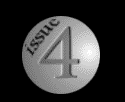
 The opening sequence from Vivre sa Vie.
The opening sequence from Vivre sa Vie.
How is this usage of the image different from a traditional
usage wherein the Hollywood actress is represented merely as an
object of beauty? The difference is subtle. In the traditional
representation of the heroine, beauty is objectified in a way that
allows us see through the surface to our own desire. We see in her
the fulfillment of our own sexual and emotional desires. Her
beauty is presented as an answer, something to be looked for. She
is presented as a solution to the problems of the male characters.
In this way, her beauty is merely a vehicle used to reveal her as
an object that satisfies our needs. Grace Kelly in Rear Window
(1954) provides us with a good example of this as the average male
viewer can't understand the idea that she might not fulfill the
needs of the Stewart character. She is a solution to all problems
if he would just open his roving eyes.
Godard does not present Nana as a solution or fulfillment. Her
beauty is opaque, it represents nothing beyond itself. There is no
context in terms of which we can place this image and thereby give
it meaning (i.e. make it represent something). If Godard had
started with the image of a man looking at something and then cut
to Nana we would see through her beauty and refer to it in terms
of her significance for this man. This possibility is not afforded
us by Godard. Rather, we must face the image in and of itself : we
are asked to enjoy it merely as an aesthetic moment.
These three films all utilize the image of the
face in new and innovative ways. They share in common
the rejection of the use of the image as a transparent vehicle for
the expression of something about the character. What is unique to
Truffaut's usage is that the image serves new narrative purposes.
In the case of Godard, the close-up is used as a means for
investigating representation and cinema. Godard always leaves us
guessing as to what it is that is being represented in the image
of the face.

